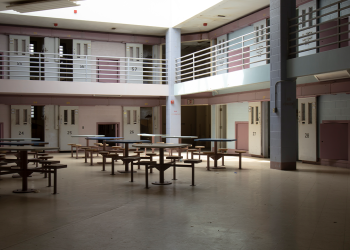In previous article i discussed the importance of Kashgar in terms of its regional connectivity and religious significance. Now, i will explore how this ancient city, alongside its religious institutions, has made remarkable progress in the fields of science and technology. This clearly shows that the propaganda portraying Xinjiang as underdeveloped or backward is completely false. During this visit, I observed everything with great attention from religious freedom to the promotion of science, technology, and artificial intelligence. What particularly caught my attention was the Science Museum, which plays a central role in the city’s development. This was our second day in Kashgar. After getting ready, we set out to visit the Id Kah Mosque. It is one of the most famous mosque in Kashgar and is considered the central mosque not only of the city but of the entire Xinjiang region. Located in the main square of the city, its unique yellow color gives it a majestic and royal appearance. Every Friday, thousands of Muslims gather here for prayers, meet one another afterward, and express the beauty of Islamic culture.
When we entered the mosque, it was impeccably clean. Persian-style red carpets were laid out. The Imam warmly welcomed us and even greeted me in Urdu, which made me happy as he recognized that I was from Pakistan. Beautifully arranged the Holy Qur’an were placed around the mosque. The entire scene resembled mosques in Pakistan neat, well-maintained, with Islamic architectural patterns, prayer carpets and ablution areas perfectly organized. Everything reflected the continuity of Islamic traditions. The Imam gave us a brief introduction, we took some photos. After leaving the mosque, we visited a nearby dry fruit market, strolled around for a while and then returned to the hotel. On the hotel’s second floor, a lecture was arranged under the title “The History of Religion and Religious Policy in Xinjiang.” The professor delivered a comprehensive presentation highlighting the region’s geographical importance and historical background. He explained that Buddhism spread in this area between 343 and 414 AD, and Islam was introduced in the 9th and 10th centuries. He described how Islam expanded in the region and how various religions coexisted harmoniously for centuries.
In the 17th century, the influence of Buddhism declined, while Christianity appeared briefly in the 18th century. The professor also discussed different ethnic and religious groups in the region. I asked about the role of Sufi shrines, since Islam often spreads through Sufism and spiritual preaching. The professor elaborated on this aspect as well. It was a highly informative session that included topics like religious freedom, freedom of expression and the lifestyle of local people. We were told that there are no restrictions everyone practices their faith freely.
The speaker emphasized that religious freedom is part of national policy, granting every individual the right to live according to their beliefs. Economic freedom was also discussed and it was explained that Islamic organizations actively participate in society without any limitations. President Xi Jinping visited the region from December 12 to 15, 2022 and stressed the need for equal focus on all aspects of development and prosperity.
When we talk about Xinjiang or Kashgar, it’s important to understand that this region is a key hub of the China-Pakistan Economic Corridor (CPEC). Kashgar is directly linked to Pakistan’s Gwadar Port, located on the warm waters of the Arabian Sea. The route stretches about 2,500 kilometers and can be traveled within 10 to 15 days. It remains open throughout the year unlike other Chinese trade routes such as the Strait of Malacca, which are often affected by freezing conditions or geopolitical tensions (particularly with the U.S.). Thus, the Kashgar-Gwadar route offers a faster, safer and more reliable trade corridor.
Kashgar also shares a border with Pakistan’s Gilgit-Baltistan region. Since both regions share Islamic cultural roots, their connection is not only geographical but also spiritual. Witnessing the flourishing Islamic traditions, mosques and cultural harmony here strengthens every Pakistani’s affection and respect for China a proven, all-weather friend of Pakistan.
In contrast, more than 220 million Muslims in India are deprived of their basic rights; Muslims in Palestine continue to face oppression and, in the U.S., Europe, and India, discriminatory attitudes toward Muslims are common. But seeing clean mosques in Xinjiang, copies of the Holy Qur’an and Muslims freely practicing their faith brought immense peace and happiness to my heart.
Later, we visited the Kashgar Hospital of Medical Sciences, where we observed the process of preparing medicines from local herbs. This hospital has now become a complete research and medical center. Many of the herbs used there were familiar to me, as they are also found in Pakistan. The doctors were highly skilled some could diagnose ailments simply through observation. Several members of our delegation, including myself, had medical check-ups, and the doctor’s advice proved very useful.
After the hospital visit, we went to the Kashgar Science Museum. It was a modern, highly advanced facility filled with displays of artificial intelligence, robotics and scientific innovations. I was pleased to see families visiting the museum with their children and the entry was completely free. A robot even drew a map of the Great Wall of China before our eyes, which was an astonishing experience. We took photos and thoroughly enjoyed the moment.
The museum’s architecture was itself remarkable. Afterward, we went to a local restaurant designed in Turkish and Pakistani style. Delicious barbeque and traditional dishes were served foods commonly found in our homes. The restaurant was spacious, clean and beautifully decorated.
It was our last day in Kashgar, which concluded with a grand dinner. Delegates from different countries showcased their cultures through songs and performances. On behalf of my nation, I expressed heartfelt gratitude to our Chinese brothers and sisters. The day ended with joy, warmth, and unforgettable memories.
Later that night, my friend Bojlanda Cuku from Albania and I went out to explore the city lights. We made beautiful memories together. From the very first day, there had been a good connection between us, which later turned into a deep friendship. Thus, our last day in Kashgar came to an enchanting and memorable close.
The post The ancient city of Kashgar becomes a hub of modern science and technology appeared first on The Financial Daily.








